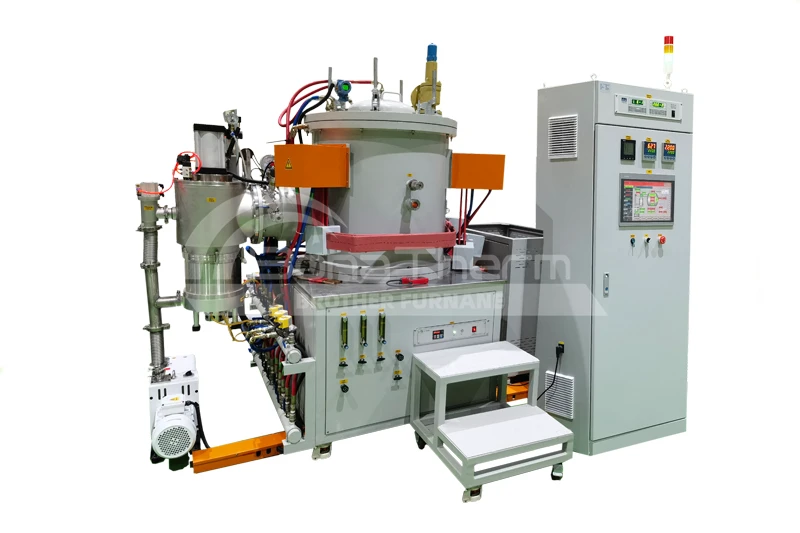seo@bonaregroup.com
Email Us

The vacuum tungsten filament furnace uses tungsten mesh heating, achieving ultra-high temperatures while remaining clean and pollution-free. It is suitable for sintering high-purity ceramics into transparent ceramics, sapphire glass, zirconia, etc. under high vacuum, performing degassing and aging treatments. It is also suitable for pilot and batch production in universities and research institutes.
Starting from the internal structure, we show you the unique design logic of vacuum tungsten filament furnace products:

Specially designed tungsten mesh heating, tungsten foil heat shield.

The vacuum unit uses a direct-connected vacuum pump and a molecular pump.

Tungsten crucible is available as an accessory.

PLC automatic control system, the human-machine interface adopts high-definition touch screen, and has a built-in operating system developed by us.
Focusing on actual scene applications, we will highlight the advantages of vacuum tungsten filament furnace equipment functions for you:
2400℃
6x10-4pa.
Nitrogen, argon, hydrogen, hydrogen-nitrogen mixed gas and other gases can be filled into the chamber.
Upper limit alarm, deviation alarm, automatic stop at the end of program operation, no need for human supervision.
Vacuum tungsten filament furnaces can cover multiple fields and demonstrate their cross-industry adaptability and practical value:




Aiming at the characteristics of various materials, the core advantage of the product is its compatible processing:










Focus on answering common questions to provide users with clear and practical usage guidelines:
A:Tungsten filament has a high melting point, stably maintaining 1800-2400°C. It is chemically inert in vacuum, avoiding reactions with ceramics or semiconductors to prevent contamination.
A:It suits sintering/annealing refractory metals (tungsten, molybdenum, tantalum) and high-temperature degassing of metal materials like titanium alloys and precious metals.
A:Brother's vacuum tungsten filament products offer a variety of models, varying in size, temperature, and power, allowing you to choose the one that best meets your needs.
Present performance details with accurate data,intuitively showing the core technical specifications of the vacuum tungsten filament furnace:
| Types | Heating Zone (Diameter x Height)mm |
Working Temperature(℃) | Temperature field uniformity(℃) | Power(KW) | Ultimate Vacuum Degree(Pa) |
|---|---|---|---|---|---|
| BR-WSL-1020 | Φ100X200 | 2300 | ±5 | 60 | 6x10-4 |
| BR-WSL-2040 | Φ200X400 | 2300 | ±5 | 160 | 6x10-4 |
| BR-WSL-3050 | Φ300X500 | 2300 | ±5 | 250 | 6x10-4 |
| BR-WSL-4060 | Φ400X600 | 2300 | ±5 | 340 | 6x10-4 |
Control of all links from raw materials to finished products:
Stainless steel sheets and high-temperature-resistant alloys are selected, meeting vacuum sealing and load-bearing standards.
Cut raw materials according to design drawings using specialized equipment to ensure dimensional tolerances.
Bends and forms the sheet metal, processing the furnace shell and chamber components with a bending angle accuracy of ±1°.
Lathes are used to process precision components such as flanges and connectors, ensuring surface roughness control.
Weld the furnace body welds, ensuring airtightness on key components, and perform post-weld inspection.
Grinds and trims welded components to ensure a smooth appearance without sharp edges.
Electrostatically sprays the furnace shell and dries it.
Install the vacuum system, heating element, temperature control module, cooling system, and tighten connectors.
Conduct vacuum tests, temperature rise tests, and safety checks.
Internally cushioned with pearl cotton, externally covered with waterproof film and wooden crates, with anti-collision markings and equipment parameter labels.